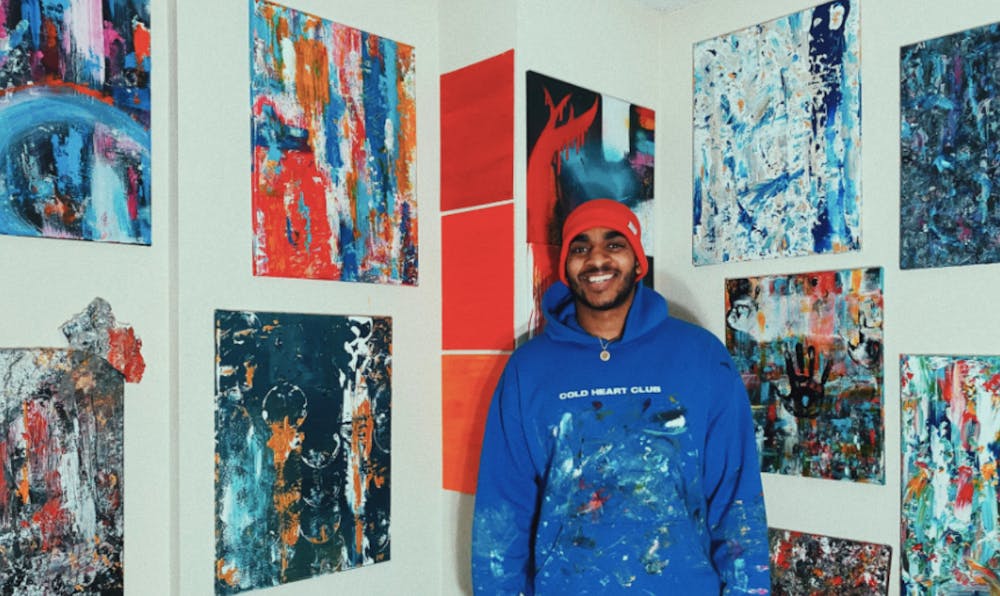Adrian Evans IV (GSE ‘21) starts all of his work on a paint–splattered tarp on the floor of his apartment. As a self–taught artist, he’s been creating abstract paintings since his sophomore year of college. His Pollock–esque pieces can be found on his instagram, @creacetion and his online portfolio. Now, as a student in the Graduate School of Education, he’s bridging the meanings of oral storytelling, teaching, and the process of creation.
Although the majority of Adrian’s portfolio consists of two dimensional abstract paintings, his interest in art was first piqued by sculpting. “With a flat surface there is only so much I can do, but with the use of piling on acrylics or using different gels I can create different textures. So if you’re looking from the painting from the side, you can see some things stick out, even from the front or the light will pick up on it in different ways or cast different shadows. A lot of my abstract sculpture background influences my work, so in a way it’s like me still working with the clay.” Adrian says.

God (2017) left, Feel (2017) right. Photos courtesy of Adrian Evans IV.
By painting on the floor, Adrian can build up his work from a flat surface, gradually allowing each layer to dry before adding more paint. The large area of the tarp also allows for multiple pieces to be created simultaneously. He keeps track of his artistic progress and development through various series. “Phase One, Two, and Three helped archive transitions in my work,” he says. “In the beginning, Phase One was a lot of splatter paints, very Pollock–y. Phase Two included more texture with long brushstrokes, and Phase Three was even more 3D texture.”
With encouragement from his grandma, Adrian began selling and promoting his artwork online. Now, many of his original paintings are available for purchase on his website. For Adrian, the transition of turning art from hobby to a business came with both benefits and difficulties. Ultimately, his art still serves to exist in a home. “A part of it has always been that I want my friends to have my pieces in their apartments as abstract centerpiece paintings. When it came to selling it, it was kind of a no–brainer, but it is still difficult to set pieces and I don’t want to lose my integrity in my artwork. It was a shot in the dark and hoping people would resonate,” he says.
Although Adrian hasn’t formally studied design, the process of creation and finding meaning in abstraction overlaps with his academic interests in Africana Studies and Education. “I found the connection [between my academic and artistic work] fairly recently. My art and interest in education and Africana Studies all revolve around storytelling,” he says. “Within the African diaspora, storytelling is a huge part of Black culture and stories are passed down for generations. Even with education, it's not so much about teaching, but that you’re finding someone on their journey and what they want to be in the future.”
Ultimately, for Adrian, the beauty is in everything that leads to a finished canvas. “With art, it’s not so much about the final product, but everything that went into it. What was the thought process behind it? What is the inspiration? What type of decisions did I make during the process?” he asks. “Especially with abstract art—theoretically anyone can do it—but not everyone does. There are decisions that are made. So it’s really about the process and story.”







